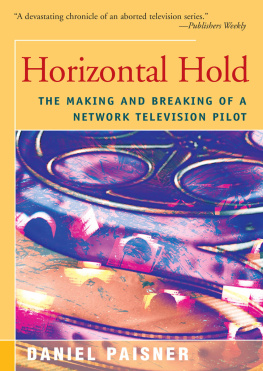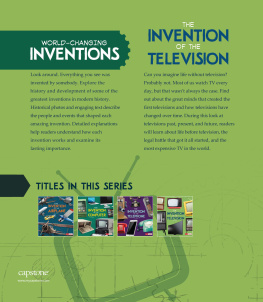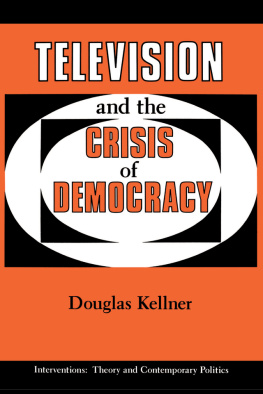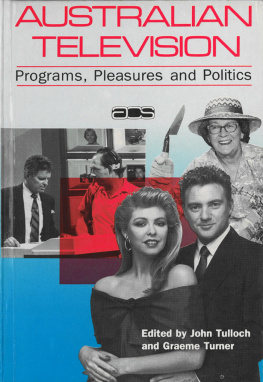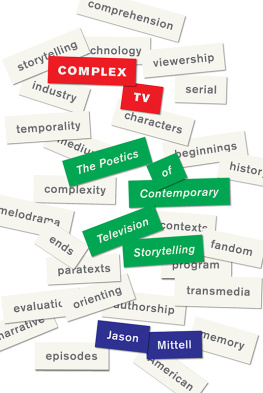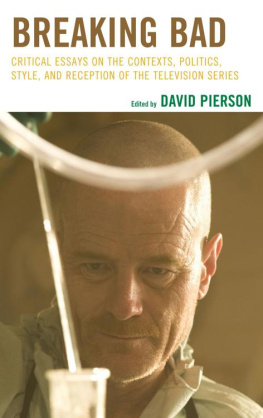Horizontal Hold
Daniel Paisner
O THER B OOKS BY D ANIEL P AISNER
N ONFICTION
T HE I MPERFECT M IRROR : R EFLECTIONS OF T ELEVISION N EWSWOMEN
H EARTLANDS : A N A MERICAN O DYSSEY
( PHOTOGRAPHS BY J ANE S OBEL AND A RTHUR K LONSKY )
F ICTION
O BIT
C OLLABORATIONS
C ITIZEN K OCH ( WITH E DWARD I K OCH )
E XPOSING M YSELF ( WITH G ERALDO R IVERA )
T HEO AND M E : G ROWING U P O KAY ( WITH M ALCOLM -J AMAL W ARNER )
A MERICA I S M Y N EIGHBORHOOD ( WITH W ILLARD S COTT )
All I want out of life is a 30 share and a 20 rating.
Faye Dunaway, in the Paddy Chayevsky movie Network
There is only so much you can buff a turd.
Tom Fontana, co-writer/co-executive producer of the CBS television pilot Word of Mouth, formerly known as The War Room, formerly known as E.O.B.
ACKNOWLEDGMENTS
I benefited from a great many good turns in the writing of this book and these, in turn and at the least, deserve this other. First, I am grateful to Gail Kinn and Steven Schragis of Carol Publishing for believing in this project, and for holding their breath (and their tongues) until its completion, and to Dan Levy for spotting the first signs of life in a years-ago notion that seemed a little too vague for almost everyone else. Also, I am grateful to Dan Strone, Robert Gottlieb, and Owen Laster of the William Morris Agency for working to keep me solvent during the researching and writing of this book, and to Bob Stein, my attorney, and Dona Chernoff, my sounding board, for keeping me out of trouble.
In New York, I was helped tremendously by Bonnie Mark, Julie Grossberg, Julie Martin, Kevin Richards, Hillary Danner, and Jim Finnerty in the Paltrow Group offices; Ed Devlin at CBS; Patrick Pleven at the Mayors Office of Film and Television; Deborah Curtan and Arthur Silver at Columbia; and John Whitesell, Joanne Sedwick, Chuck Raymond, John Feld, Tom John, Bill Barol, Victor Paganuzzi, Ron Kelson, Jane Trapnell, Rich Reinhart, and Carl Woitach, on and around the set. Karen Chasin-Kavanagh helped to transcribe some of the hundred or so hours of interviews conducted for this book. My brother, Jonathan Paisner, read the manuscript with care and insight. Also, and significantly, the E.O.B./War Room cast membersMary Beth Hurt, Rich Hall, Geoffrey Nauffts, John Dye, Jennifer Van Dyck, and William Duff Griffinwere very gracious with their time and convictions, both during production and afterward.
In Los Angeles, invaluable assists came from Terry Hughes, Abby Singer, R. J. Visciglia, Barbara Brace, Ivan Fonseca, Tom Carpenter, and Kent Zbornak, and from most of the transplanted New Yorkers (or repatriated Los Angelenos) mentioned above. Associate director Lex Passaris and production associate Robert Spina were particularly helpful, candid, and otherwise generous. And, like their doppelganged counterparts from New York, the Word of Mouth cast membersJoshua Rifkind, Lewis Black, Haviland Morris, Michele Lamar Richards, Lee Tergeson, George Newbern, Gladys Knight, and William Danielswere extremely patient and open.
Thanks to all.
Also in Los Angeles, I am at least temorarily indebted to my friends Jon and Erin Fain, Jeff and Lisa Stern, and Maureen Reagan and Dennis Revell for their unfailing hospitality and (mostly) unfailing home cooking. They offered a home away from home in my weeks of displacement without exhausting my already-tired advance for this book.
At home, I am grateful to my wife Leslie for a whole bunch of things, but specifically for not delivering our second child, Hana, until I was able to complete my fact-finding tour to the opposite coast; and to my oldest, Jacob, for looking after his mommy in my absence, and for giving me one of the sweetest, tightest, squeeziest, most extraspecialest hugs evereverever in the whold wide world upon my return.
Mostly, though, I am grateful to Bruce Paltrow, Tom Fantana, and John Tinker for opening their doors and letting me see what I could see. Their energy, creativity, and insight are everywhere in these pages. Hopefully, by the time this effort reaches bookstores, they will also be everywhere on our small screens, again.
Daniel Paisner
June 1992
INTRO
Strange beast, television.
As an industry, it has a greater impact on the way we live and work and think than almost any other. As a billboard, it can influence our ideals and our ideas in a way that is utterly and haltingly its own. As a medium, it informs, encroaches, entertains, denigrates, and obfuscates on the very grandest of scales. And, as an appliance, it is more like a microwave oven than any of us would care to imagine; it informs us from within, invades us, its left-behind messages seeping through our skin and out into the rest of the world as if they were always there and will always be; stand too close and you might get zapped.
There is nothing like television, in art or commerce. It is part mirror, part window, and part monitor. It has the power to move or to stifle, to transport or to root, to chill or make warm. It can do whatever it wants, and some things it could not possibly intend. It has fueled and funneled a half century of thinking on politics, family, economics, religion, community, race, justice, sexuality, and almost every other subject that has traveled its airwaves or cable lines. It has supplanted our dinner-table conversations. It tells us when to laugh and when to cry, what to believe and what not to believe, how to behave, and what clothes to wear. And we listen. It has underlined our world in such a way that the spectator at a newsworthy eventa baseball game, a protest march, a hurricanemust race home to relive that event on the small screen, to make it more real, or at least to make it seem more real. It has made our lives more valid at the same time that it has invalidated our lives.
Television is Americas common denominator. Its hued cathode embers light our poorest homes and our richest and almost every home in between. According to one survey, there is at least one television set in over 97 percent of American households. According to another, there is more than one functioning television set for every two functioning Americans. Still another reveals, alarmingly, that the typical high school graduate of the 1990s will have spent nearly twice as much time in front of the television set as he will have spent in the classroom. And yet, despite its invasive reach, television is, also and primarily, the emptiest of vessels. Unplugged, it is nothing. Even plugged it is nothing but what programming executives, network and otherwise, put into it. And what they put into it, lately, is this: derivative cop shows, medical dramas, domestic situation comedies, workplace situation comedies, miniseries, soap operas, mysteries, multigenerational family sagas, courtroom dramas, home-shopping sprees, music videos, game shows, documentaries, talk shows, reality shows, concerts, stand-up comedy, news, sports, commercials First run, then rerun, and then rerun again. Even burning yule logs have been known to register a blip in the overnight ratings. Blips are good things, and the more blips the better. Of course, network programming executives seek more than mere ratings blips and so go to great and expensive lengths to develop prime-time programming for the remote-controlled masses. Sometimes they succeed. Most times they do not.
Not too far along these great lengths there lies a peculiar little industry by-product known as television pilots, prototype versions of planned weekly shows (or weakly planned shows). They surface each spring, in large homogeneous groups, in the strangely resilient dance that invites independent producers and somewhat less independent production companies to audition for a slot on a networks prime-time schedule. They are the best and worst indicators of where television has been and where it is going.

